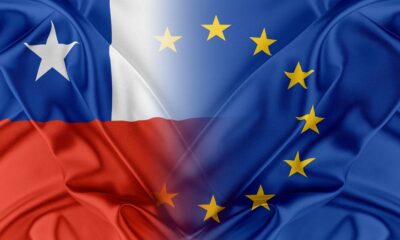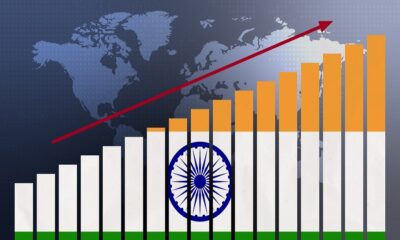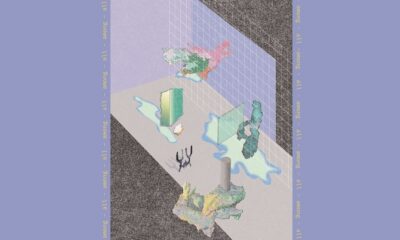Fashion
MS & JK rewrites its mission in industrial inkjet printing
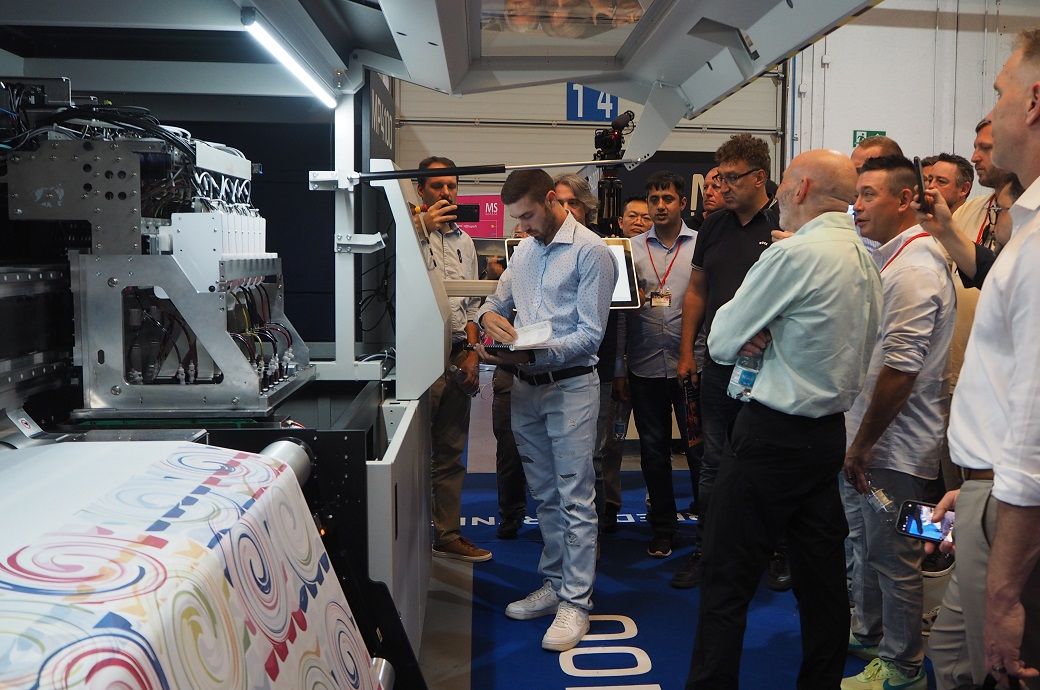
Five new printers, high-performance inks, customer focus, and solid partnerships with dealers: this is how the two Dover brands are responding to the challenges of a market under pressure
MS & JK unveiled five new MP series printers at their 2025 Global Dealer Meeting in Como, alongside advanced inks and a revamped customer service model.
The printers offer higher speed, robustness, and versatility, supported by sustainable ink innovations.
The company aims to boost dealer collaboration, upgrade installed bases, and expand global market reach.
Since the mid-1990s, when “digital textile” was little more than a utopia, Como has been considered the Silicon Valley of textile printing, and MS one of its most forward-thinking pioneers and interpreters. In those formative years, the ink manufacturers that would later merge to form JK developed the first water-based inks that could be deposited with inkjet heads, ranging from sublimation to direct printing with reactive, acid, and disperse dyes.
Since 2015, with the acquisitions by Dover Corporation, the technology, people, patents, and production sites of MS & JK have become key assets of Dover, forming, together with Markem-Imaje, the backbone of the US industrial conglomerate’s imaging solutions offering. With a young and dynamic management team, the company boasts an installed base of thousands of multi-pass and single-pass printers in the apparel, home textiles, graphics, and industrial decoration sectors.
This June, MS & JK held its Global Dealer Meeting 2025 in Como, where it unveiled five new printers, opened the doors of its factories and demo centers, organized visits to companies using its technologies, and shared with its partners a strategy set to revolutionize the customer experience in the years to come.
At the heart of the multi-pass printers of the future
In industrial printing, hardware is of paramount importance. This is where MS has built its leadership, bringing bestsellers such as the JP4 and JP7 to market in 2011 and 2013, respectively. Today, the historic JP acronym is giving way to MP (short for Multi Pass) and a range of inkjet printers that aim to set new market benchmarks: MP3000, MP3100, MP4000, MP4100, and MP5000.
The new equipment shares a brand-new technological platform in every respect: body design, construction architecture, user interface, electronics, print heads, safety, and ease of use. The MP printers are, first and foremost, more robust and heavier, and they are manufactured using 20% fewer parts, which is beneficial for both spare parts inventory and maintenance. The new Kyocera KJ4B–0600EX (Katana) print heads feature 2,560 nozzles arranged in a line rather than in trapezoidal blocks to reduce banding at high speeds. Among Katana’s original technical solutions is the use of silicone to seal edges and other parts of the head, providing greater protection and easier cleaning. With drop sizes ranging from 5 to 24 pl (+30% compared to the previous model), the KJ4B–0600EX also enables speeds up to 35% higher. This speed increase is also supported by MS’s new proprietary electronics, which use the high-performance EtherCAT communication protocol. Designed to meet different application requirements as well as productivity, quality, and budget constraints, the new printers are currently available only in a 1.8 m width (but MS is already working on 3.2 m models).
To each their own MP
Designed for printing on sublimation paper, the MP3000 is the entry-level model in the range and features four heads with the classic CMYK configuration. The printer is equipped with a mini-jumbo roll feeder for rolls up to 500 mm in diameter and reaches a speed of 315 m2/h, equivalent to 223 m/h (linear). The MP3100 offers the same speed and is designed for high-quality sportswear applications. It is equipped with eight heads in a single row, allowing for an eight-color configuration (CMYK + Gray, Orange, Green, Blue) or double four-color printing.
Moving up a level, we find the MP4000, dedicated to the world of fashion and equipped with eight heads in two rows configured in double four-color printing for a maximum speed of 630 m2/h, equal to 400 m/h. The MP4000 is fitted with a jumbo roll feeder for reels up to 1,000 mm in diameter. Even more versatile is the MP4100, which, thanks to its 16 heads arranged in two rows, can combine the speed of the MP4000 with eight-color configurations.
The MP5000, on the other hand, is designed for direct printing on fabric with reactive, disperse, acid, or pigment inks, as well as adhesive tape feeding. It also has a maximum of 16 heads arranged in two rows, supports various four- or eight-color configurations, and reaches a maximum speed of 585 m²/h, equal to 390 m/h, which drops to 201 m²/h, or 134 m/h, in high quality. The MP5000 can be expanded with a range of optional feeding, tensioning, drying, and polymerization devices as well as a new recirculation system for the water used to clean the belt.
All MP printers can be equipped with the Qwizard touchscreen control system and are compatible with the exclusive Color Pack automatic color calibration and management software.
Leader in water-based inkjet
While high-performance, reliable hardware is essential for developing volumes and turnover, repeatability of processes and compliance with quality and safety standards are the real keys to success. With expertise, laboratories, and production sites for designing and manufacturing printers, inks, and software, MS & JK occupies a unique position in the market.
The JK plant in Novedrate (Como), covering 9,000 m² and employing 60 people in two shifts, is one of the most modern sites in Europe for the production of inkjet inks, as well as the location where all Kiian Digital products are created. The company has a capacity of 1,500 tons/year per shift and manufactures around 300 products in different chemicals and colors, for a total of over 800 active product codes. The plant includes raw material warehouses, mixing centers, quality control rooms, filling facilities, analysis and testing laboratories, and a laboratory dedicated to intensive printing tests with different MS printer models.
Before releasing a product, the product development team performs countless physical, chemical, and functional tests and supports customers in obtaining the required certifications. At all levels of production, the company has invested in hardware and software automation, cobots, and vision systems to reduce human variables in the formulation, packaging, raw material control, and batch traceability processes.
New inks and unexpected applications
Kiian Digital inks are the fuel that powers the new generation of MS printers, and JK has developed new and improved versions. Among these is the new generation (V2) of Digistar Bellagio BIB reactive dyes, packaged in bag-in-box to reduce the space taken up by empty tanks by 87%. V2 introduces the new colors Ultra Grey and Light Magenta, designed to achieve softer and cleaner tonal transitions in the light areas of the image. In the disperse dye segment, the offering focuses on Digistar Bravo with its 13 colors, while Digistar Pigment is attracting growing interest in pigment applications. One of the advantages of the latter chemistry, available in eight colors, is its extraordinary color rendering and wash fastness, even without pre- and post-treatment, as well as its compliance with OEKO-TEX ECO PASSPORT, GOTS, and ZDHC Level 3 standards. In addition to formulating and producing inks, MS & JK handles the creation of waveforms for the print heads installed in the printers in-house so as to always guarantee maximum performance for the end user.
During the Global Dealer Meeting 2025, MS & JK presented its partners with a provocation and a challenge, distributing blue jeans made by printing denim fabric with Digistar Pigment inks on MS printers. In addition to the striking aesthetic result, the manufacturer demonstrated the extraordinary color fastness by subjecting the jeans to bleaching and rubbing.
Amidst the surprise and applause of the numerous dealers present, the session highlighted the significant opportunity arising from the digitization of a segment of the fashion industry that is heavily reliant on chemicals and washing water, which would reap enormous environmental, economic, logistical, and creative benefits from the use of digital printing.
The revolution starts with the customer experience
With 20 years of experience in customer service, including 16 at Markem-Imaje, Federica Maggi has been committed since 2024 to rethinking the customer experience for MS and JK Group customers and partners. In just a few months, the manager and her team unified the customer service infrastructure, which had previously been separated by equipment and inks, creating a more orderly flow of information and facilitating process metrics. In addition, she worked with Markem-Imaje’s global entities to overhaul the logistics model and make the supply chain more resilient.
“When I arrived, I found an organization with 25 years of history, incredible skills, and solid fundamentals, but one that was undergoing a major revolution,” says Maggi. “So, we decided to focus on implementing best practices that would enhance the professionalism of our people and make a huge amount of data usable and analyzable so that we could all use it to build the future.”
The corrective measures taken, combined with weekly alignment meetings, are translating into increased product availability, reduced delivery times, higher quality, a sharp drop in complaints, and the ability to adapt quickly to local regulations.
“We are living in a time of intense pressure, where rules are constantly changing, generating disruptive impacts on the supply chain and production,” concludes Maggi. “That’s why it’s no longer realistic to work locally and it’s crucial to think globally.”
Consumables and services: from critical issues to assets and opportunities
With over 2,000 machines installed and ambitious plans to capture new market share, the ability to effectively supply consumables and technical support is a crucial challenge for MS & JK. To this end, ink and spare parts warehouses have been consolidated over the past year, and the products are now stored and shipped together. In this area, the company aims to work side by side with its dealers around the world to develop predictive models, optimize local warehouses, and generate business opportunities.
“Prevention is better than cure, and the only way to improve is to analytically and rigorously monitor and study recurring situations, market trends, seasonality, and changes,” Maggi points out. “Only if we are united, if we talk to our customers, if we share information, can we make reliable forecasts and plans.”
The group sees enormous potential in its established customer base to generate added value for itself and its customers, including through the upgrading of its machine fleet with more productive and efficient technologies and the introduction of more advantageous and sustainable service and maintenance models. Last but not least, given the enthusiastic response from participants at the launch event, MS & JK expects that the adoption of the new MP will start with users of older printers.
“We should always think of our installed base as an asset, seeking to create new business opportunities, starting with the replacement of existing printers with the latest generation models,” says Matteo Forte, Global Marketing Manager at MS & JK. “Customer service has also long been seen as a cost center, whereas it is actually a valuable opportunity to become consultants to users of our technology and contribute to their success by aligning ourselves with local habits and needs.”
Commitment and synergies for a win-win collaboration
Over the next twelve months, the MS & JK team will work actively to promote new products, optimize strategies and services, and support dealers in the field in analyzing and meeting customer needs. The addition of Massimo Cavazzini, former head of sales for Markem-Imaje in Southern Europe and now Global Sales Lead for MS & JK, will bring further speed and vigor to the commercial strategy.
“Working with our dealers is one of our strengths. We intend to focus on improving their satisfaction and strengthening relationships with our mutual customers,” said Cavazzini. “Establishing agreements that generate significant value for both parties will be the most interesting challenge in the coming months.”
The quality of the relationship, both human and professional, and the commitment to achieving ambitious goals seem to be the new leitmotif of MS & JK and its channel partners, who have come to Como from all over the world. Equally important is the celebration of a brilliant technical achievement, which lays the foundations for a research and development process that, in the medium term, will lead the company towards the release of new technologies and entry into new markets.
“We have invested time and energy in forming a team of people who are able to collaborate constructively, support each other, and help the company become even better,” concludes Sergio Giannone, Senior Director of Product Engineering and Operations at MS & JK. “It had been years since MS had introduced a completely new product. The launch of the MP series is the extraordinary result of a long journey together and the first step in an exciting journey that the company has just begun.”
All models in the MP series are already installed, operational, and available for demonstrations at the Center of Excellence in Guanzate (Como). Series production is scheduled to start in Q3 2025, with the first deliveries expected in Q4.
Note: The headline, insights, and image of this press release may have been refined by the Fibre2Fashion staff; the rest of the content remains unchanged.
Fibre2Fashion News Desk (HU)
Fashion
Mielle becomes NFL’s first textured haircare partner

Published
December 1, 2025
Textured haircare brand Mielle has launched a new partnership with the National Football League, marking the League’s first collaboration with a textured haircare company.
The campaign aims to support the millions of NFL fans with textured hair—women now make up about half of the NFL’s fanbase—while addressing the unique hair challenges faced by athletes wearing helmets, including dryness, breakage and frizz.
The partnership expands Mielle’s growing footprint in professional sports and is designed to boost representation, access to high-quality care, and product innovation for textured-hair athletes and fans.
“The NFL is excited to have Mielle, a brand that is committed to performance, community, and empowering fans and athletes, lean into the NFL partnership” said Tracie Rodburg, SVP global partnerships, NFL.
“This partnership aligns with the league’s mission to build lasting connections within our communities nationwide and celebrate the self-expression of our players and fans.”
The P&G brand says the collaboration gives Mielle a major platform to showcase the performance of its dermatologist-reviewed, Skin Health Alliance–accredited formulas under real athletic conditions.
“We’re honored to be the first textured hair care partner of the NFL through our partnership with P&G,” said Monique Rodriguez, founder and CEO, Mielle. “For so many of us, football represents family and community. It’s attending cookouts, tailgates, reconnecting with family and friends, and showing up in your favorite team colors. And for millions of fans, that includes twisting, braiding, and caring for your textured hair before kickoff.”
The announcement is accompanied by a social-first campaign, including the viral “Passing the Phone” video moment featuring talents across the league from including players, executives and agents, to players’ families and on-air talent.
Copyright © 2025 FashionNetwork.com All rights reserved.
Fashion
India’s logistics push puts fashion in the fast lane

The government’s three-year scorecard backs this up. Since its launch in September ****, ULIP has integrated more than thirty logistics and customs systems and clocked over *.* billion (***+ crore) API transactions as of around August ****, effectively treating data flows like rails. LDB, operational since July ****, has cumulatively tracked over ** million EXIM containers across *** inland container depots (ICDs) by around August ****, turning container visibility from a premium add-on into the default. A Transportation Emissions Measurement Tool (TEMT), developed by IIM Bangalore and partners and endorsed by DPIIT, now gives exporters an ISO-*****-aligned way to report logistics emissions, so freight can sit alongside product footprints in sustainability dossiers.
From Map to Mill Gate: What Gati Shakti Has Actually Changed
Fashion
Modella eyeing another acquisition, this time it’s the Wynsors footwear chain
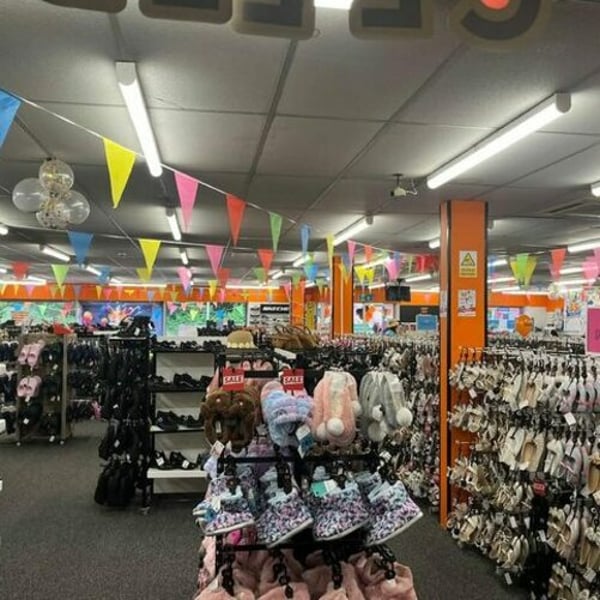
Published
December 1, 2025
Modella Capital is fast becoming one of the most acquisitive businesses on the UK high street and the latest retailer in its sights is footwear chain Wynsors World of Shoes.
That’s according to Sky News, which said the investment firm is targeting a takeover of the privately owned footwear retailer and is currently in “advanced talks”.
Wynsors trades from around 50 standalone shops across the north of England and Modella is now “the likeliest buyer” of the business, with expectations of a deal before the end of the year.
Modella was recently in the news as the buyer of Claire’s UK business. It also recently bought the non-travel locations of WH Smith (now renamed TG Jones) and owns Hobbycraft and The Original Factory Shop too. It had earlier hoped to add Poundland to its portfolio but missed out on that one.
Wynsors has been looking to sell for around two months and accountancy firm RSM had been hired explore interest from prospective bidders, Sky News said.
The chain trades from around 50 standalone stores and 40 concessions. It sells brands including Adidas, Skechers, Hush Puppies, Clarks, Nike, kickers and more. And although its sells footwear for women, men and children, it focuses particularly on school shoes.
Copyright © 2025 FashionNetwork.com All rights reserved.
-

 Sports1 week ago
Sports1 week agoWATCH: Ronaldo scores spectacular bicycle kick
-

 Entertainment1 week ago
Entertainment1 week agoWelcome to Derry’ episode 5 delivers shocking twist
-

 Politics1 week ago
Politics1 week agoWashington and Kyiv Stress Any Peace Deal Must Fully Respect Ukraine’s Sovereignty
-

 Business1 week ago
Business1 week agoKey economic data and trends that will shape Rachel Reeves’ Budget
-

 Tech6 days ago
Tech6 days agoWake Up—the Best Black Friday Mattress Sales Are Here
-

 Politics1 week ago
Politics1 week ago53,000 Sikhs vote in Ottawa Khalistan Referendum amid Carney-Modi trade talks scrutiny
-

 Fashion1 week ago
Fashion1 week agoCanada’s Lululemon unveils team Canada kit for Milano Cortina 2026
-

 Tech6 days ago
Tech6 days agoThe Alienware Aurora Gaming Desktop Punches Above Its Weight


